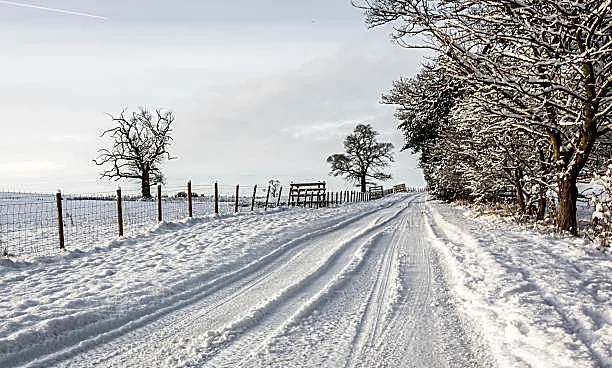What's Happening?
A significant cold snap is expected to hit the central and southeastern United States, potentially breaking decades-old temperature records. Meteorologist Ashton Robinson Cook from the National Weather
Service's Weather Prediction Center reports that frigid air from Canada will move into the central U.S. and then eastward, with the most extreme cold anticipated around November 10. This weather event could lead to temperatures below freezing for half of the contiguous U.S., affecting areas that are currently experiencing above-average warmth. The southeastern U.S. may see daytime and nighttime temperatures breaking century-old records. Additionally, the Great Lakes region might experience snowfall, although forecasts for precipitation remain uncertain. A unique hazard in Florida will be cold-shocked iguanas falling from trees due to loss of blood flow at temperatures as high as 50 degrees Fahrenheit.
Why It's Important?
The impending cold snap is significant due to its potential to disrupt daily life and impact local ecosystems, particularly in the southeastern U.S. Record-breaking low temperatures could affect agriculture, energy consumption, and transportation. The sudden drop in temperature may lead to increased heating demands, potentially straining energy resources. In Florida, the phenomenon of cold-shocked iguanas highlights the vulnerability of non-native species to unexpected weather changes. The event underscores the importance of preparedness for extreme weather conditions, which can have wide-ranging effects on communities and infrastructure.
What's Next?
The cold snap is expected to be brief, with temperatures rising again by next Wednesday. However, residents in affected areas should prepare for the intense cold and potential disruptions. Meteorologists will continue to monitor the situation, providing updates on temperature forecasts and potential snowfall in the Great Lakes region. Local authorities may issue advisories to help residents cope with the cold and protect vulnerable populations, including wildlife. The event may prompt discussions on climate patterns and the need for adaptive strategies to manage extreme weather events.
Beyond the Headlines
This cold snap may serve as a reminder of the broader implications of climate variability and the need for resilience in the face of changing weather patterns. The occurrence of such extreme temperatures could lead to discussions on climate change and its impact on weather extremes. Additionally, the event highlights the importance of scientific research and meteorological forecasting in preparing for and mitigating the effects of severe weather.













